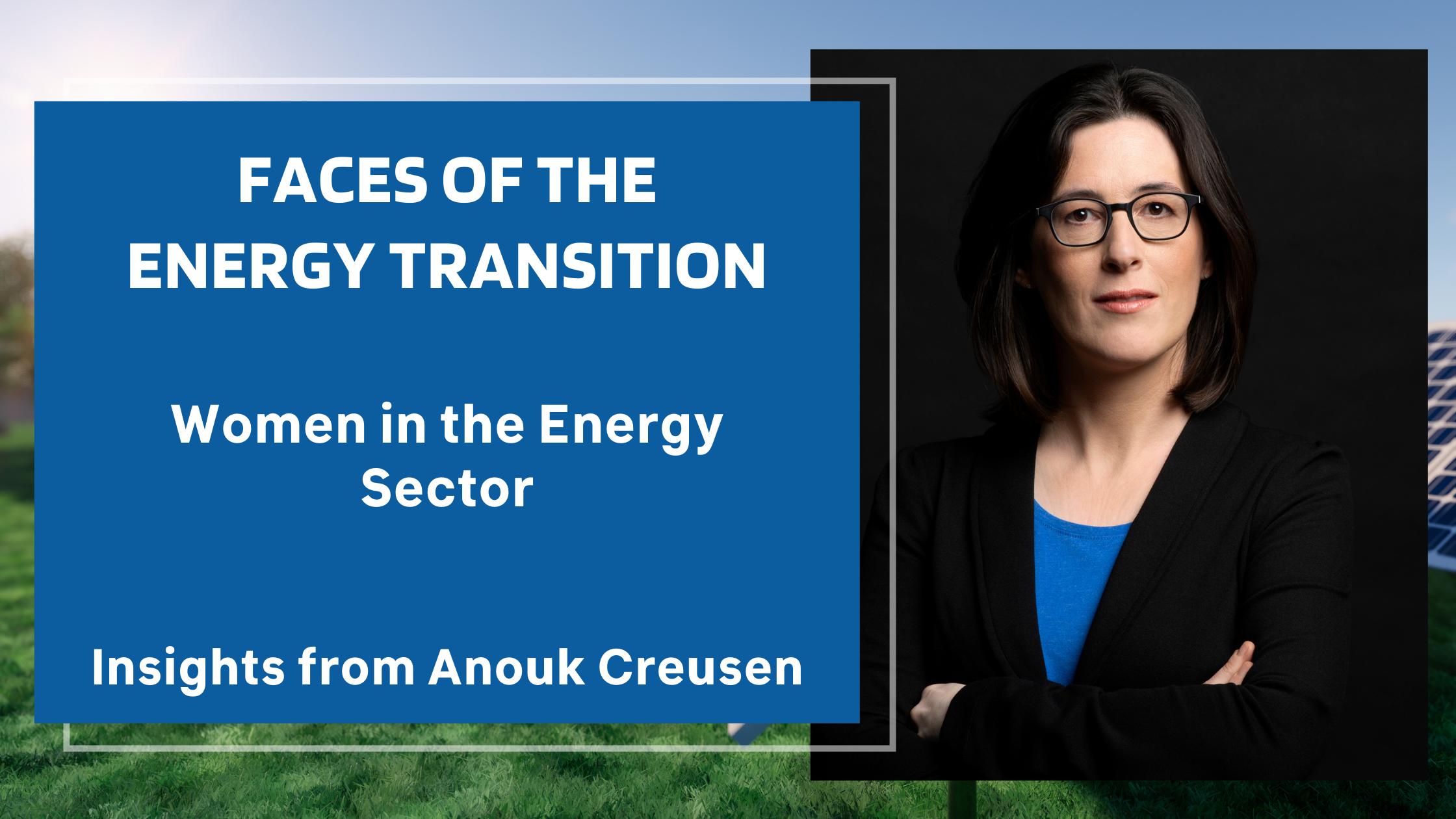
The energy sector remains one of the least gender diverse sectors and closing this gender gap will be vital as women are key drivers of innovative and inclusive solutions. - International Energy Association1
TechnologyCatalogue.com believes that real change can be achieved when there’s inclusion and diversity in both decision making and execution processes. There is just no match to many ideas laid on the table coming from people with different perspectives.
Unfortunately, gender representation --- a crucial element of diversity --- is still unbalanced in the energy sector. Data from the Global Women’s Network for the Energy Transition2 show that women comprise 22 percent of the traditional energy workforce globally, with an increasing number in the renewable energy sector where 32 percent of its workforce is female. And these numbers decrease dramatically zooming in on influential and decision making positions.
The higher percentage in renewable energy sector shows that the global energy transition offers huge opportunities for societal transformation to take place.
TechnologyCatalogue.com’s mission is to catalyse change in the global energy sector. We decided to join the discussion and explore our role in promoting greater inclusion and diversity in the sector.
To kick off our series of features on this topic, we invited Anouk Creusen, Managing Director of 75inQ, to give her insights. Anouk is a trained geoscientist who held various international senior positions at Shell and Petroleum Development Oman. She founded 75inQ in 2019 to accelerate energy transition by bringing gender diversity to leadership levels in the companies and organisations shaping the transition to clean energy.
Below are questions that Anouk candidly answered over a Zoom interview on 18 January 2021.
What do you think is the overall value of a more inclusive and diverse energy sector in accelerating energy transition?
Diversity, in the broadest sense of the word, just means good business. It’s the combination of different backgrounds, different perspectives and different insights offered on the decision-making table that make decisions solid and well-informed.
And in the case of accelerating the transition to clean energy, gender balance means making use of the valuable perspectives of a large portion of our stakeholders. Women are half of the population and form the majority when you realize who will be impacted most by the access to clean and affordable energy.
Researches show that inclusion and diversity in an organisation results in the introduction of more innovations and better overall performance. How are women playing a key role in introducing innovations in the energy sector?
If you look at transition to a more sustainable future, startups and companies in the forefront are often led by men. However, decisions to actually adapt sustainable goals or work for the common good instead of just looking at bottomline figures for the shareholders are often made by women. And you can really witness in most companies that when women hold key positions in the company or even become part of the decision makers, there is a shift towards a more inclusive and more sustainable company direction.
Not always, of course, but in general you can see this trend happening. What women often bring is this perspective that we are not here alone and that we also have to take care of each other and the planet. That is more than just the bottom line.
Could you describe the current position of women in the energy industry? How do we fare compared to men in terms of having seats in the boardroom or being able to shape decisions?
The transition to a decarbonised energy system is important to all of us humans. All of us, male, female and all in between. The urgency to deal with the impact of our current energy system on our economies and our quality of life is a growing concern, and a potential threat for future generations.
Based on current insights about the effects of our carbon emissions, we know we need to move faster. And to do this, we need to foster innovation. And we need to ensure this transition is a fair and just one for all of us. Energy is no longer limited to the price of a barrel on the stock market alone, it is happening in our backyards and the effects of climate change are unsettling large parts of the population as a whole.
A fast, just and innovative energy transition means all hands on deck. However, we are currently leaving it to a small section of decision makers from a selective group. This means that there are huge opportunities to move faster by banking on all the talent available, but that also means that we will need to work a bit harder to get everyone at the table. That is not easy, but it is essential if we want to make this transition work, for all of us.
The hiring process in the energy sector, especially for entry level positions, shows great progress in terms of gender balance. We have come a long way as we see women excelling academically, and being able to land in positions in energy companies. As such, female candidates fare well compared to male counterparts as qualifications are mostly based on academic achievements or other factors that women and men applicants are on a level playing field.
An important issue blocking progression of women through the leadership pipeline is related to the work culture we have embedded in our society.
Cultures in general are built by and for people, in the corporate world this means that company cultures are shaped ‘by and for men.’ This is not their fault of course, but we will have to face the implications and the solutions if we wish to move forward towards a more just and inclusive energy system. We have developed very strong and clear frameworks about career phases where companies start to promote talents into leadership positions.
In many organisations, the pre-selection for these positions, including international mobility for instance, takes place when employees are between 35 to 40 years old. In real life and in our society, this is also a time that often coincides with another rush hour; in this age group, many male and female employees are building a family or caring for aging parents. The decisions made by male and female employees during these years are often leading towards an imbalance in the leadership pipeline, because of an unlevel playing field.
Flexible work hours are open to most female employees, but men generally don’t make use of them. The company culture simply doesn’t allow them to care without having an impact on career progression, while for female employees this is a given. Another example: international mobility is great with a partner that is prepared to join so many talented women in that age group are not as flexible as their male colleagues.
These examples work great for employees that the culture was built for, but lead others to seek other pathways. In many cases women choose to leave the leadership track, because it doesn’t work for them. If a company is aware of these embedded mechanisms, it can act upon them of course. Often though, unfortunately, women are simply labeled as unambitious and the case is closed.

What initiatives should the energy sector carry out to increase diversity and foster a better gender balance in the decision-making table?
The energy sector should do what it is best at; measure every bit of it. Including the demographics of the decision makers. In the same manner as we are real-time measuring production, revenues, stock-prices, etc. We lack these data now, we have no idea who is shaping the transition to clean energy these days. Women employed does not mean that they have a seat at the table and are included in key decision making positions. There are stories that ‘renewables’ are doing better in diversity, but no numbers to underpin these claims.
A challenge these days is the ‘shortage of human capital’ in the energy transition to make it all happen. Training new talent and re-training existing talent is one solution, but it has to go hand in hand with efforts to retain diverse talent as well.
So, what I suggest is to really embed measuring inclusion and diversity in the overall industry- and company-level performance monitoring in the energy sector. Then, we take that huge step of understanding and fully embracing the key importance of diversity and better representation in accelerating energy transition.
To get more information about Anouk Creusen and her efforts toward a better gender-balanced energy sector, check 75inQ through this link.
TechnologyCatalogue.com’s Faces of the Energy Transition blog series aims to shed light on key issues surrounding the global transition to clean energy. We invite thought leaders, industry players and members of the academe to share their insights on topics that are related to the Energy Transition.
If you have suggestions on topics and/or resource persons, feel free to reach out via email at community@technologycatalogue.com.
Photo credits: Flore Zoe (1st) and Fleur Halkema (2nd)
Notes:
1. International Energy Agency (n.d.). Energy and gender: A critical issue in energy sector employment and energy access. Retrieved on 01 February 2021, from https://www.iea.org/topics/energy-and-gender
2. Global Women’s Network for the Energy Transition (n.d.). Facts and FiguresI. Retrieved on 01 February 2021, from https://www.globalwomennet.org/women-energy/
